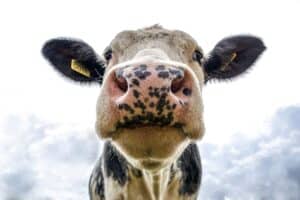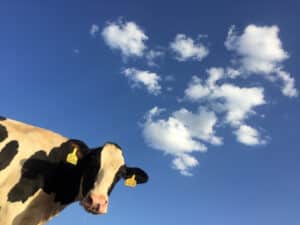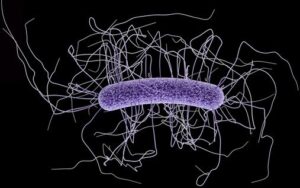Summer is coming and with it, the negative effects of heat stress. Reductions in milk production as a result of heat stress is readily seen, but there are less immediate negative effects of heat stress such as reduced fertility and immune function. A cow’s comfort zone and ability to keep cool are impacted by a combination of several environmental factors. These factors include temperature, humidity and air movement. The optimal temperature range for cow comfort is between 25 and 70 degrees Fahrenheit. Cows experience mild heat stress once temperatures climb over 75 F, with moderate humidity. High levels of humidity exacerbate heat stress and when the air is already highly saturated with water vapor, any additional evaporation from air movement will be minimal. Recent research has shown that dairy cows start to decrease milk production when the temperature-humidity index (THI) exceeds 68 (i.e., temperature of 72°F with 45% relative humidity, or 80°F with no humidity). The detrimental effects on estrus expression, conception rates, and early embryo survivability occur before declines in milk production are observed and may occur at a temperature- humidity index as low as 55 to 60. Heat-stressed dairy cows cost the American dairy industry an alarming $1.5 billion annually.
Consequences on Animal Performance
As cows attempt to dissipate body heat, maintenance requirements increase and feed intake decreases. Reduction in feed intakes reduce milk production and puts the cow at risk for various health issues. Because higher producing cows have higher feed intakes, they produce more metabolic heat and will be at greater risk.
Variable feed intake, less forage consumption, slugging of grain and feed selection increase the risk of rumen acidosis. Reduced ruminal pH along with
changes in ruminal metabolism that favors accumulation of products that inhibit synthesis of fatty acids by the mammary gland can lead to milk fat depression (MFD). Cows in hyperthermia have reduced rumen motility and increased panting, which is part of an attempt to better thermoregulate. Panting results in hyperventilation and loss of CO2, which is thought to reduce the flow of salivary buffers to the rumen. It is also possible that elevated body temperature negatively affects the ability of mammary cells to synthesize milk components.
In addition to its negative effect on intake, rumen function and health, digestibility and milk production and composition, heat stress also negatively affects fertility and reproduction in dairy cows. Some data indicates that only 10 to 20 percent of inseminations in “heat stressed” cows result in pregnancies.
Management Strategies to Alleviate Heat Stress
There are many managerial strategies that can be employed to alleviate heat stress and reduce its negative impacts.
- Ample supply and unlimited access to water.
- When outdoors, cows should be kept out of direct sunlight.
- Avoiding overcrowding in pens.
- Reduce walking distance and time in holding pens.
- Work cows during the coolest part of the day.
- Feed early in the morning and late at night and push up often
- Provide ventilation and cooling of air by fans or in combination with sprinklers
Modifying Mineral Content of the Diet
Although cows do not have many sweat glands, they will sweat a certain amount during hot weather and lose electrolytes. Heat-stressed cows lose a lot of potassium (K) and they can become potassium deficient. As a result, K supplement, especially as potassium carbonate, has been shown to help the cows to cope with heat stress while maintaining production. Research has shown that additional dietary K in the form of potassium carbonate might alleviate MFD by reducing the production of intermediate trans fatty acids that are known to be associated with MFD, while potassium chloride did not have the same effect.
Moreover, the loss of potassium increases blood acidity. Raising DCAD increases the ability of the cow’s blood to buffer acids and this raises blood pH (decreasing acidity). Additionally, when higher amounts of potassium are added to the diet, magnesium absorption is reduced, thus increasing the requirements for magnesium.
Conclusions
Heat stress leads to substantial economic losses through its detrimental effects on rumen health, metabolism, production and reproduction. It is estimated that heat stress can cause a farm to lose 10 to 35 percent of an animal’s current milk production. It is important that environmental and dietary modifications be implemented before the effects of heat stress are noticed. These modifications are needed not only for the milking herd but just as importantly for the far-off and close-up dry cows. There are many heat stress treatment options out there. Be sure to work with your nutritionist to manage DCAD levels and focus on management strategies to physically cool cows. By reducing heat stress, milk production, reproduction, and health can be maintained or at least the negative effects reduced and potential profitability realized during the spring, summer, and early fall months.




